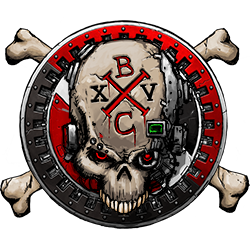A few weeks ago, a topic was posted about army sizes and points costs. There was a lot of anecdotal evidence about armies becoming larger, such as comparing the number of points of forces used in battle reports. I thought that it would be interesting to take a more uniform approach to this question, so I put together a method for quantifying the change in army size over time. I did not include Rogue Trader in this analysis, as the units and the game itself are so different from modern 40k that analysis would be very difficult.
Methodology
The method that I settled on is based on the same principles as the CPI, a commonly used inflation metric in the US. This metric uses a "basket" of goods to measure overall inflation, so that a dramatic change in the price of one good would not effect the overall inflation rate. For this article, I made a very basic army for each faction that I investigated (Space Marines, Orks, Eldar, and IG) consisting of one character, two ten-man squads of a basic troop, one "elite" squad, one walker/dreadnought, and one tank. I chose these units as I believe that they represent a fairly typical small army that a new player might use, and also so that types of units becoming more or less costly wouldn't skew the total too much. All of the units are equipped with default wargear. The lists for each faction are as follows:
Space Marines:
- 1x Captain
- 2x 10 Tactical Marines
- 1x 5 Terminators
- 1x Dreadnought
- 1x Predator Destructor
Orks:
- 1x Warboss
- 2x 10 Boyz
- 1x 5 Flash Gitz
- 1x Deff Dread
- 1x Battlewagon
Eldar:
- 1x Farseer
- 2x 10 Guardian Defenders
- 1x 5 Wraithguard
- 1x Wraithlord
- 1x Fire Prism
Imperial Guard:
- 1x Commissar
- 2x 10-man Infantry Squads
- 1x 3 Ogryn
- 1x Scout Sentinel
- 1x Leman Russ Battle Tank
Below is a graph showing the points cost of the lists described above throughout the editions.
Conclusions
The chart above shows the point cost of the basic lists I described. It seems like the largest increase in army size (seen on the chart as a decrease in points) actually happened decades ago, during the switch from second to third edition. Since then, point costs have been fairly constant, with the largest armies appearing around eight edition. I found this conclusion interesting, as there seems to be a general feeling that armies are getting bigger every edition.
I found that point cost changes varied dramatically depending on the unit. For example, ogryns went up in points by over fifty percent between third and fifth edition, while sentinels remained at 35 points for something like five editions in a row.
Possible Errors
This investigation is by no means perfect. Acquiring data was difficult, as old rulebooks are not always easy to find. For example, I was unable to find a copy of the sixth edition Eldar army list, and the best data that I could find was a 6th edition data file for a desktop app called Army Builder. This had an identical point cost to the 5th edition army, I am uncertain of its reliability.
The Imperial guard received two codices in third edition, but none in fourth. I used the 3.5(?) edition codex as the data for fourth edition, which may not perfectly faithfully represent their points cost throughout third, but the difference was only five points.
I was unable to generate a data point for orks for second edition, as I could not find flash gitz in their army book. However, even without flash gitz the total number of points was already above the third edition level, so I believe that they would also experience the sharp drop form second to third that the other armies saw.
This is the first article that I have written on this site, so if anyone has comments or criticism I would love to hear it.
- SuperStef, StratoKhan, Dr_Ruminahui and 2 others
-
 4
4
-
 1
1
